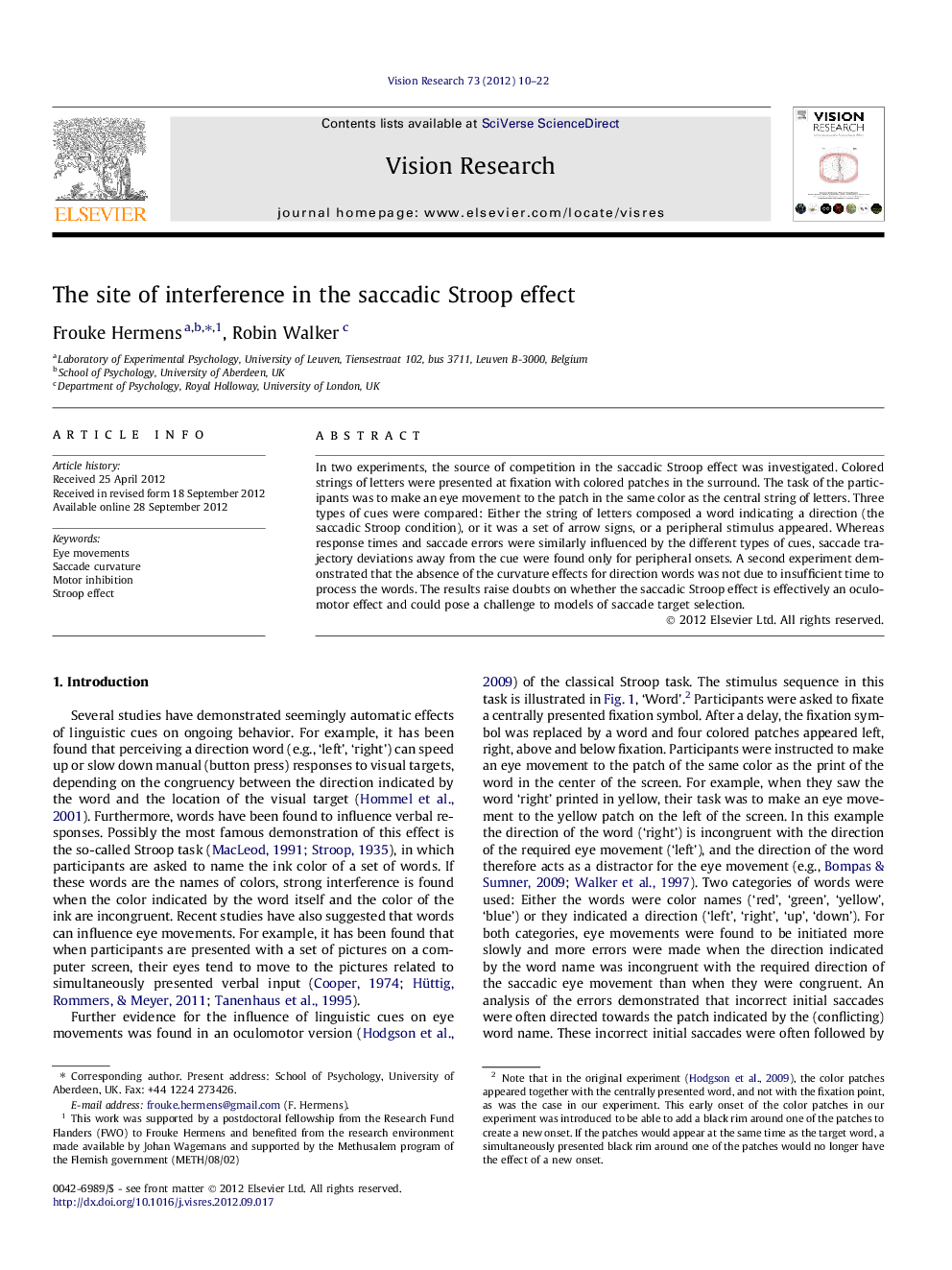| Article ID | Journal | Published Year | Pages | File Type |
|---|---|---|---|---|
| 4033882 | Vision Research | 2012 | 13 Pages |
In two experiments, the source of competition in the saccadic Stroop effect was investigated. Colored strings of letters were presented at fixation with colored patches in the surround. The task of the participants was to make an eye movement to the patch in the same color as the central string of letters. Three types of cues were compared: Either the string of letters composed a word indicating a direction (the saccadic Stroop condition), or it was a set of arrow signs, or a peripheral stimulus appeared. Whereas response times and saccade errors were similarly influenced by the different types of cues, saccade trajectory deviations away from the cue were found only for peripheral onsets. A second experiment demonstrated that the absence of the curvature effects for direction words was not due to insufficient time to process the words. The results raise doubts on whether the saccadic Stroop effect is effectively an oculomotor effect and could pose a challenge to models of saccade target selection.
► We investigated the source of competition in the saccadic Stroop task. ► Response times and errors were similar for words, arrows, and peripheral onsets. ► Saccade trajectory deviations were only found for peripheral onsets. ► The results could pose a challenge for models of oculomotor target selection.
